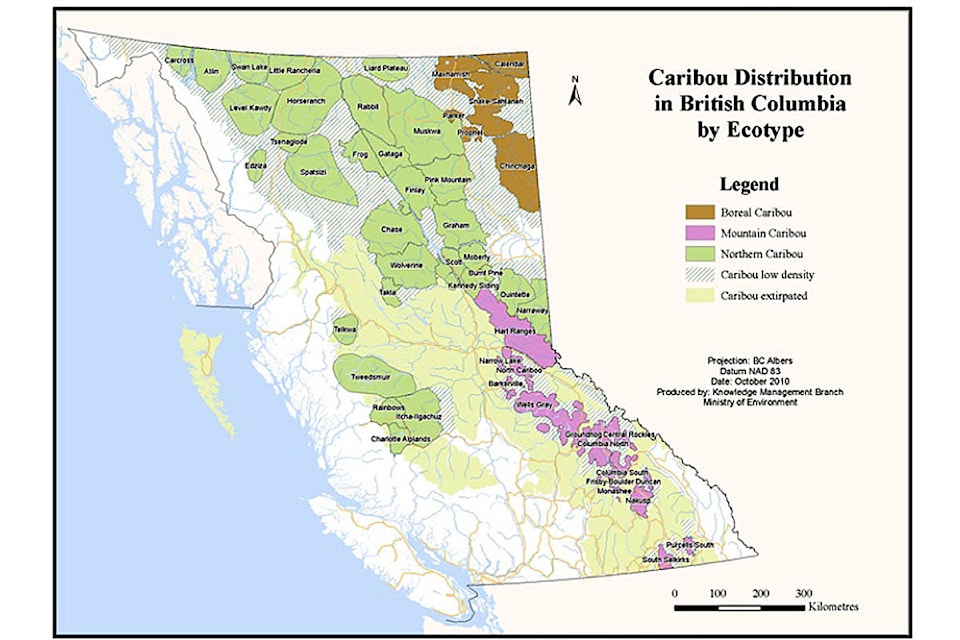The Interior Lumber Manufacturers’ Association says plans to protect caribou in B.C. will have an economic impact.
ILMA president Dan Battistella told the Thompson-Nicola Regional District board that land is decreasingly available for logging, mining and back-country recreation, due in part to legislation that protects old-growth forests and parkland. Additionally, the province is working on a program to protect caribou habitat in B.C., which he said will further diminish land availability.
“This is a big deal,” Battistella said. “Probably not front and centre in Kamloops because it is just to the west or the east of us. But if it did roll through, it would have dramatic effects to a lot of industry.”
The province is working with the federal government on a plan to protect caribou habitat in B.C., in order to recover and conserve the animals following significant population decline (from 40,000 to 19,000) since the early 1900s.
Caribou are considered to be at risk, with the largest threat to the animals being resource extraction.
Battistella said the operating land base is under “enormous pressure.” He anticipates a fibre-supply issue in the future and expressed concern over mill closures.
B.C. director of caribou recovery Darcy Peel said that while ILMA’s concerns are valid, it is too early to determine impact because the province is still developing an agreement with the federal government. He said a consultation draft will be completed in the fall, which will be circulated for feedback to those affected. He added the province will work with ILMA to mitigate concerns.
“It’s just too early to say whether there will be any additional habitat impacts,” Peel told KTW.
The province is 95-million hectares in size, with about half of that forested and about 22-million hectares available in the timber-harvesting land base. Annually, about 200,000 hectares is logged.
